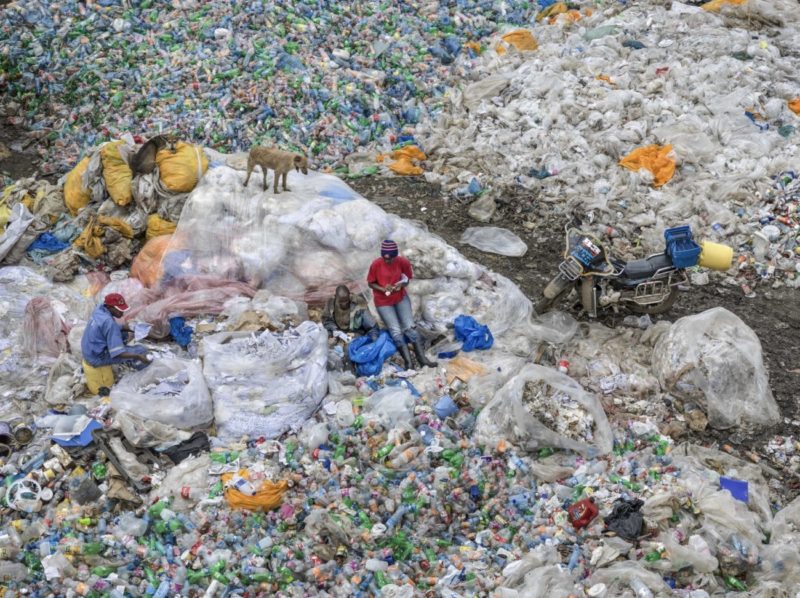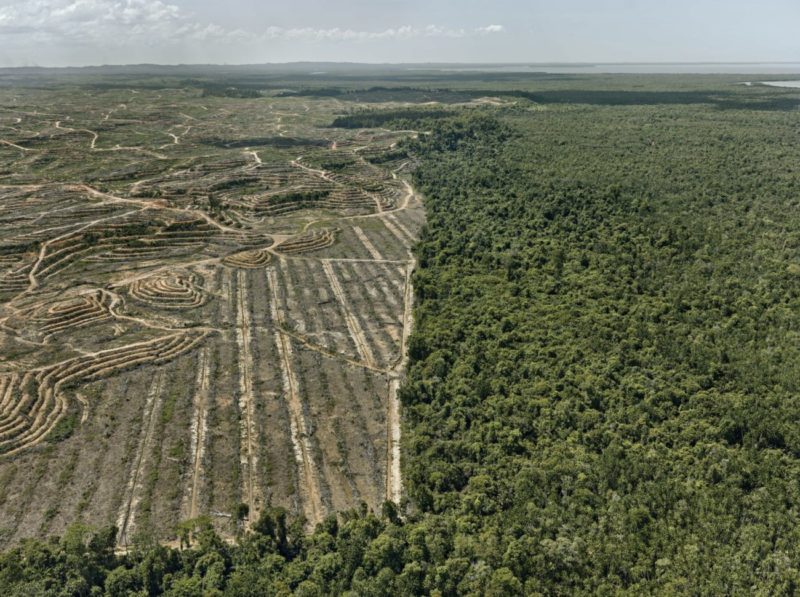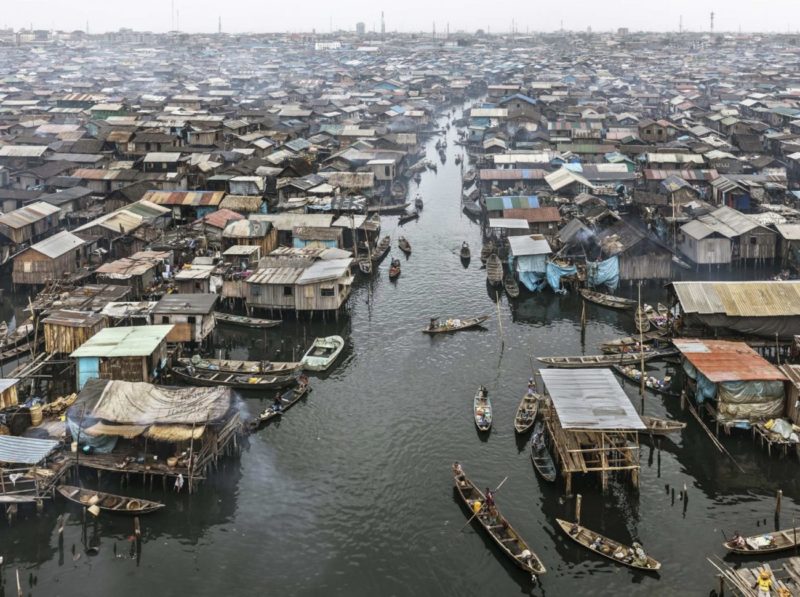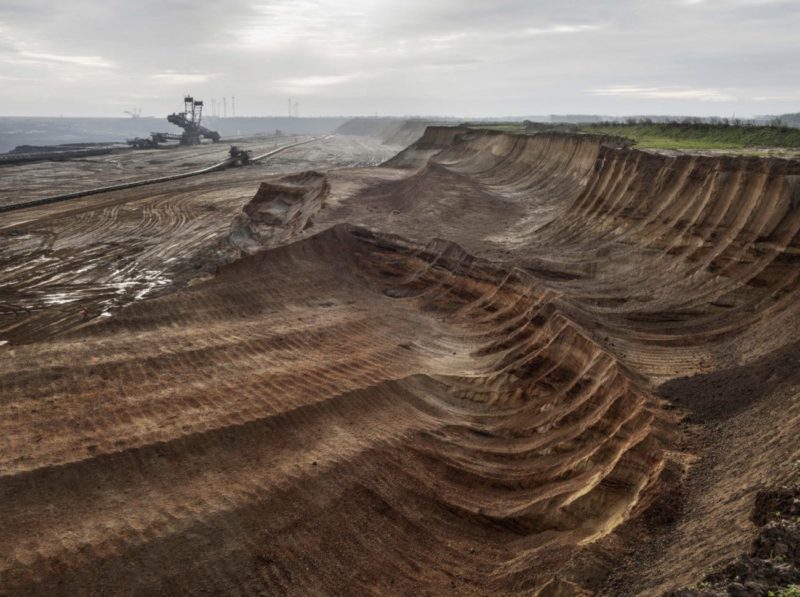EVERY DAY IS EARTH’S DAY: DO YOU REMEMBER EDWARD BURTYNSKY’S SUBLIME IMAGES OF DESTRUCTION?
The moment is dramatic, but something exceptionally beautiful is happening and we all need to reflect on. Most of the time indeed nothing is more harbinger of profound thoughts and observations than amazingly controversial photographs.
Deers walking down the streets in Japan, dolphins that jump out the water in North Italy, the Himalaya mountains suddenly visible again, after 30 years, from cities in India… Mother Nature re-awakes and the spectacle is so incredible that we almost don’t recognize the planet that we have poisonously colonized.
Two days ago we did celebrate the 50th Earth’s day, but today, as every day of this unexpected home arrest, we must remember that out there living beings are taking back the world we share with them, finally laying claim their place in it.
We all hope that this war-like history’s chapter will end the soonest, however many are the lessons to bring with us from the effects of Cornavirus pandemic: first of all is that we do not own the Earth, but we are guests here who are asked to be respectful of (natural) rules and harmoniously coexist with this wonderful host planet.
To engage you into this dutiful enormous commitment, we decided to remind you about the project “Anthropocene ”, featured on DRY Issue #1, with the astonishing, devastating photographs of Edward Burtynsky.

HOW IS DISASTER PHOTOGRAPHY SUBLIME
“Whatever is fitted in any sort to excite the ideas of pain and danger, that is to say, whatever is in any sort terrible, or is conversant about terrible objects, or operates in a manner analogous to terror, is a source of the sublime; that is, it is productive of the strongest emotion which the mind is capable of feeling.” In an age of image saturation and climate change, photo – graphs of destruction no longer affect us the way they once did, making the destruction appear so sublime. Photographers of various political sensibilities, almost since photography’s invention, haven’t seen a conflict between the need to document atrocities and the desire to create a visually pleasing image, attracted to photography as a type of popular resistance. Not a “disaster porn”, an exploitative depiction of devastation for the morbidly curious to consume, but work that derives from a sense of solidarity. These images shame viewers into pushing for change – and they cannot do so without first affecting “the strongest emotion which the mind is capable of feeling.” Though the more pictures photographers show of destruction, violence or poverty, the more accustomed we become to seeing them. There are simply too many on the internet and social media to affect us in the way Burke imagined. “Nature has ceased to be what it always had been – what people needed protection from,” Susan Sontag observed in On Photography (1977). “Now nature – tamed, endangered, mortal – needs to be protected from people.” In the age of anthropogenic climate change, natural disasters are increasingly man-made, and photographs of their effects can serve as premonitions of human mortality. They are also often beautiful in a way that belies their subject matter, or perhaps prompts a reconsideration of beauty and sublimity.
– Edmund Burke, A Philosophical Enquiry into the Origin of our Ideas of the Sublime and Beautiful, 1757


“There is a reason why so many people switch the news off, take a break from social media when disaster strikes or turn their gaze away when tragedies occur. Because such events are disturbing and frightening. But then, inevitably, they keep going back for just another look. The landscapes in my photographs are probably all of this – they are “terrible” – but people are equally attracted by all of this and, by extension, by the problems presented, because they are aesthetically pleasing. It’s always a moment of discovery or amazement when you encounter something that starts off by appearing visually attractive. When people make that connection and realize what they are actually seeing, they rarely turn away. They remain involved despite the often uncomfortable truths behind all of this. The landscapes in my photographs are not disaster landscapes – these are business-as-usual landscapes: there is a parallel between them and our lives. To create our cities we have to take the equivalent quantity of materials from nature. Negative or inverted architectures formed by processes of extraction act as if the quarries mirrored the exponential human growth taking place in so many cities in the world. The reflection of these extractions can be seen in the structures that we erect in an attempt to touch the sky. These images allow us to understand the consequences of our way of living and what we have become. The entire production of this project was carbon offset through a company called Less Emissions, which is what I do with all my projects. As artists we are aware of the irony and costs – monetary and planetary – involved in making art that deals with the problems facing humanity with regard to the earth. But I also think that some of these things – like technology and the use of iPads in exhibitions – cannot necessarily be avoided. Such things are deeply rooted in our current culture and in many cases reflect outstanding progress. The aim of The Anthropocene Project is to increase awareness of the term itself and of the unsustainable ways in which we humans are living on and consuming our planet. Art and photography are of great use in this mission. A visually compelling film or photograph may not be capable of directly changing laws but they can help us acquire awareness. They can contribute to the important debates that are needed so much today. ”
– Edward Burtynsky
*An•thro•po•cene (n) The proposed current geological epoch, in which humans are the primary cause of permanent planetary change.


THE ANTHROPOCENE PROJECT
We have reached an unprecedented moment in planetary history. Humans now arguably change the Earth and its processes more than all other natural forces combined. The Anthropocene Project is a multidisciplinary body of work bringing together fine art photography, film, virtual reality, augmented reality, and scientific research to investigate human influence on the state, dynamic, and future of the Earth. The Holocene epoch started 11,700 years ago as the glaciers of the last ice age receded. Geologists and other scientists from the Anthropocene Working Group believe that we have left the Holocene and entered a new epoch: the Anthropocene. Their argument is that humans have become the single most defining force on the planet and that the evidence for this is overwhelming. Terraforming of the earth through mining, urbanization, industrialization and agriculture; the proliferation agriculture; the propagation of dams and diverting of waterways; CO2 and acidification of oceans due to climate change; the pervasive presence around the globe of plastics, concrete, and other technofossils; unprecedented rates of deforestation and extinction: these human incursions, they argue, are so massive in scope that they have already entered, and will endure in, geological time.
Anthropocene, an exhibition curated by Sophie Hackett, Andrea Kunard, Urs Sthae, Fondazione MAST, Bologna, until 5 January 2020 (in conjunction with Art Gallery of Ontario (AGO), Toronto and National Gallery of Canada (NGC), Ottawa).








